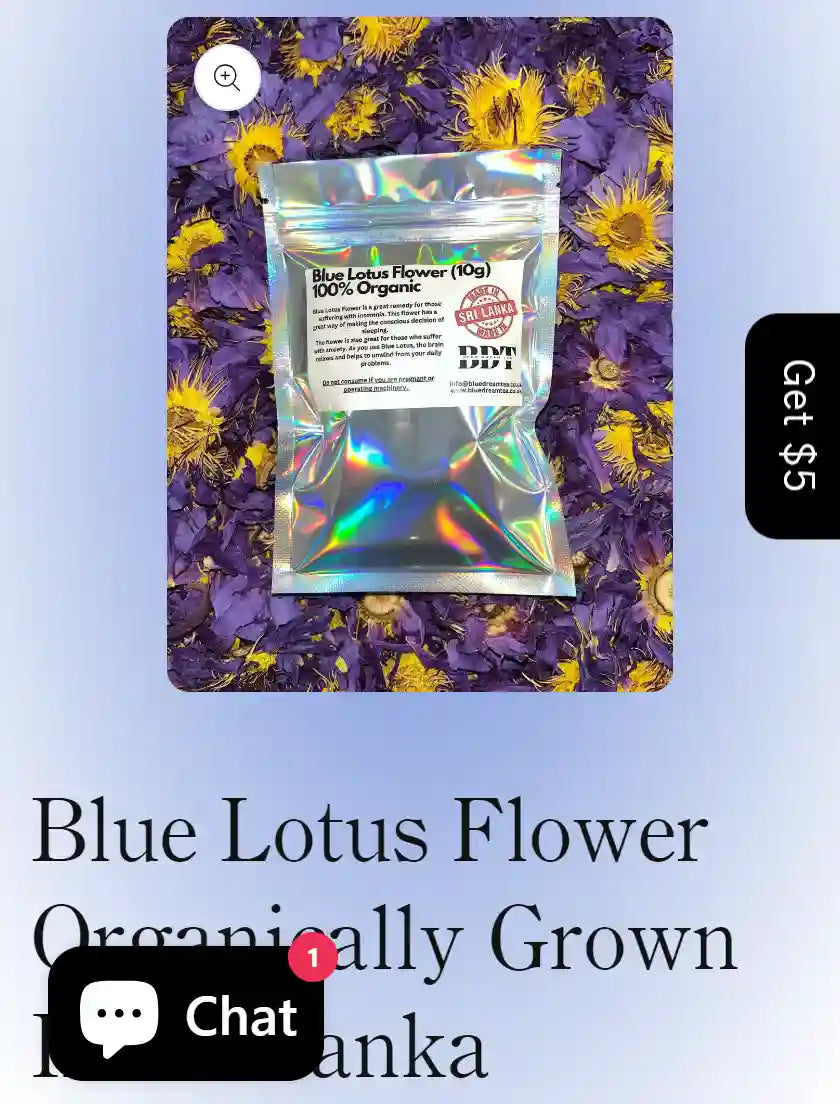24 Hour Dispatch For All Orders...
Spend $50 To Get 10% Off + Free Tracked Shipping!
In the realm of natural remedies for mental well-being, Nymphaea caerulea, commonly known as the Blue Lotus, has emerged as a fascinating and increasingly popular option. Recognized for its historical significance and therapeutic properties, this aquatic plant has been utilized for centuries in various cultures for its potential benefits on mental health. In this article, we delve into the potential advantages of incorporating Nymphaea caerulea into your wellness routine.
Ancient Roots and Cultural Significance:
Nymphaea caerulea holds a rich history, dating back to ancient civilizations such as the Egyptians and the ancient Mayans. In Egypt, the Blue Lotus was associated with spirituality, symbolizing the cycle of life and rebirth. Its use is depicted in ancient art and literature, indicating its cultural and religious significance.
Natural Relaxant and Stress Reliever:
One of the primary benefits of Nymphaea caerulea lies in its ability to act as a natural relaxant. The plant contains compounds that may have mild sedative effects, helping to alleviate stress and promote a sense of calm. Incorporating Blue Lotus into your routine may be particularly beneficial for those dealing with everyday stressors and seeking a natural way to unwind.
Enhanced Mood and Elevation of Spirits:
Users of Nymphaea caerulea have reported experiencing an uplifted mood and heightened sense of well-being. The plant is believed to influence serotonin and other neurotransmitters in the brain, potentially contributing to feelings of happiness and contentment. This natural mood enhancement can be especially appealing for those looking to support their mental health without resorting to synthetic alternatives.
Improved Sleep Quality:
Quality sleep is crucial for mental well-being, and Nymphaea caerulea is thought to have sleep-inducing properties. By promoting relaxation and tranquility, this plant may help individuals achieve a more restful night's sleep. Improved sleep can, in turn, positively impact mood, cognitive function, and overall mental health.
Mindful Meditation and Spiritual Exploration:
For centuries, Nymphaea caerulea has been used in religious and spiritual practices to induce a meditative state. Some users have reported heightened awareness and a deepened sense of introspection when incorporating Blue Lotus into meditation routines. Its subtle psychoactive properties may facilitate a mindful exploration of one's inner self, making it a valuable tool for those on a spiritual journey.
Antioxidant Properties:
Beyond its potential effects on mood and relaxation, Nymphaea caerulea possesses antioxidant properties. Antioxidants help combat oxidative stress, which is linked to various health issues, including mental health disorders. By incorporating Blue Lotus into your routine, you may support your body's natural defense against oxidative damage.

Nymphaea caerulea, the Blue Lotus, is a plant with a storied past and promising potential for mental well-being. While more research is needed to fully understand its mechanisms and effects, anecdotal evidence suggests that it can be a valuable addition to holistic wellness practices. As with any herbal remedy, it's essential to approach its use with mindfulness and respect for individual differences. If considering the integration of Nymphaea caerulea into your routine, consulting with a healthcare professional is advised to ensure its compatibility with your health and well-being goals.
Examples: Diazepam (Valium), alprazolam (Xanax), lorazepam (Ativan)
Mechanism of Action: Benzodiazepines have a sedative effect and work by enhancing the activity of gamma-aminobutyric acid (GABA), a neurotransmitter that reduces brain activity. This can induce sleep and relaxation.
Usage: Benzodiazepines are typically used for short-term treatment of insomnia. However, they are associated with risks of dependence, tolerance, and withdrawal, so they are generally not recommended for long-term use.
Examples: Zolpidem (Ambien), eszopiclone (Lunesta)
Mechanism of Action: Non-benzodiazepine hypnotics target specific receptors in the brain, the GABA-A receptors. They have a similar sedative effect to benzodiazepines but are considered less habit-forming.
Usage: These medications are often prescribed for the short-term treatment of insomnia. They have a reduced risk of dependence and withdrawal compared to benzodiazepines but can still lead to tolerance if used over an extended period.
Examples: Trazodone, amitriptyline
Mechanism of Action: Some antidepressants, such as trazodone and amitriptyline, have sedative properties and can help with sleep. They work by affecting serotonin and other neurotransmitters in the brain.
Usage: These drugs may be prescribed off-label for insomnia, especially if other treatments have not been effective. They are generally considered safer than benzodiazepines.
Examples: Suvorexant (Belsomra)
Mechanism of Action: Orexin receptor antagonists work by blocking the effects of the neuropeptide orexin, which is involved in regulating wakefulness. By inhibiting orexin, these drugs promote sleep.
Usage: Belsomra is a relatively new sleep medication used to treat insomnia, and it has a different mechanism of action compared to other sleep aids. Side effects may include drowsiness and unusual dreams.






In this article we will explore the different ways to use Blue Lotus Flower, ranging from smoking to drinking in your tea...
In a world filled with hustle and bustle, finding restful sleep can often be a challenge. See how this flower can help...
Learn how Blue Lotus Flower was found by the Ancient Egyptians... it'll blow your mind!
Learn how Blue Lotus Flower compares to cannabis here. This article is great for those suffering with addiction and looking for a much cheaper alternative... Only this alternative is practically a detox!

